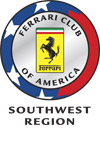
Market Report -"To Hype and Back"
By: Cris Vandagriff
Go back to 1985, the Republicans were in office, the economy was "BULLISH" and Ferrari cars were, as some experts said "under priced."Ferrari released the 288 GTO in 1984 and the Testarossa in 1985. Both models were in such demand none of the loyal Ferrarista knew how to act. The market made no sense to most long timers. There were two ways in which to act, the first was denial and the other was "pro-active." There was not a right or a wrong, we all were in uncharted waters, some thought it was deadly cold others thought it was perfect conditions.
Anyone who is remotely interested in Ferraris has stories about missing the boat by minutes, taking the wrong boat or the pleasure cruise of a lifetime. We have all heard the stories but real question is, have we learned anything? Why did the market go up and why did it go down?
In my opinion, the "hype" started with the 288 GTO. For the first time in modern Ferrari history there was a model introduced that was not available for everyone to purchase. Essentially there was one car produced for each dealer worldwide. The United States was left out totally. Adam Smith's idea about supply and demand came into play. Next was the introduction of the Testarossa, without question the most sought after car of all time. Again, supply and demand dictated an immediate escalation in the price.
With the introduction of these cars a few astute people realized that there was an argument to be made that there were more significant Ferraris which were produced in much smaller numbers available for a fraction of the cost of a new 288 GTO or Testarossa. And off we went.
Fortunes were made during this time, it seemed as though everyone was on the bandwagon. The hype took on epidemic proportions, there was not a Ferrari model that was unaffected by the "hype". At the time I took an unpopular stand on the market. Customers would come into the dealership and ask my opinion what I thought a particular model would be worth in any given time period. My standard answer was that the customer was buying the car for the wrong reason, make a purchase based on the fact that a particular model was a favorite body style, or it was a technical milestone, the performance was of interest, not because it was first a good investment. Ferraris have always been good investments. Once they were out of production, they would perform slightly better than a conventional investment over the long haul, short term gains were few and far between. This opinion often fell on deaf ears as it was too easy to make a significant return on the investment in a very short period of time.
The first sign of a "slow down" we noticed at the dealership was in March of 1989. We went from selling 15 used cars a month to 5 in a period of one month, the tap was shut off! New car sales were as strong as ever, just the used car market was affected. We had several "big" cars in inventory at this time and we decided to let these cars go at a reasonable price. By August of 1989 all the "big" cars we wanted to sell were gone and we became spectators on the side lines. By December 1st, 1989 the "hype" was in check. There were a few big deals happening but for the most part the party was over. But why?
As time passed the "hype" began looking like a pyramid, at first there was a very broad base and in the end there were only a few involved. It became harder to find "retail" buyers for the cars, eventually the market took on a wholesale base with only a few retail sales. The significant players had realized there was a diminishing customer base and got out. The same time the Ferrari market got "hyped" so did the money market. Lenders gave the impression that if a person was breathing then money would be lent. The "easy money" allowed the customer base to broaden even further and at the same time allowed "investors" to get over extended (unfortunately this was not unique to
